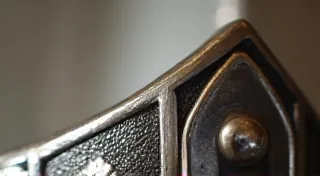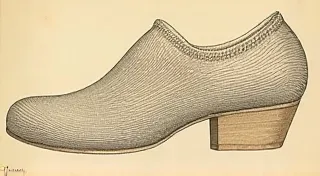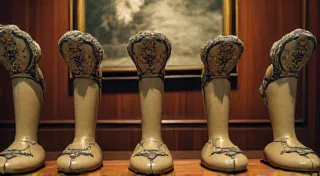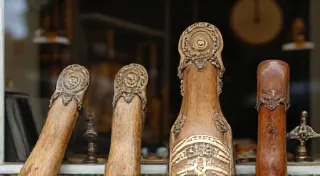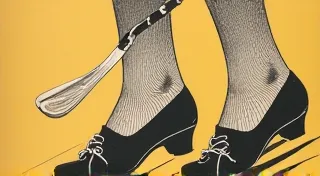Identifying Antique Shoehorn Materials: Ivory, Wood, Metal & More
Welcome to the fascinating world of vintage shoehorns! While their purpose – assisting in the effortless glide of a shoe onto a foot – was purely functional, the materials used to craft them have transformed these accessories into coveted collectibles. Understanding the materials used in antique shoehorns is crucial not only for appreciation of their craftsmanship but also for accurately assessing their value. This guide will delve into the common materials you’re likely to encounter, highlighting their characteristics and significance. The ingenious designs and ongoing evolution of these tools are quite remarkable; you might be interested in exploring early shoehorn patents to understand the innovative thinking behind their creation.
The Allure of Ivory (and its Substitutes)
Ivory was, for a significant period, *the* premium material for shoehorn handles. Its smooth, dense texture and beautiful, natural grain made it ideal for the hand. Genuine ivory (typically from elephant tusks – though other animal ivory was sometimes used) is warm to the touch and possesses a unique luster that’s difficult to replicate. Identifying true ivory can be tricky, but here are some key indicators:
Genuine ivory is typically creamy-white or slightly yellowish, with subtle, swirling grain patterns.
It’s surprisingly heavy for its size and feels substantial in the hand.
When held to a bright light, ivory will exhibit a slight translucence.
A sharp knife or needle will leave a difficult-to-clean scratch on genuine ivory.
When freshly cut or scratched, true ivory often emits a faint, characteristic odor (though this is often subtle).
Due to ethical concerns surrounding the ivory trade and subsequent legal restrictions, the use of genuine ivory has dramatically declined. Modern collectors are increasingly focused on sustainable and ethical practices. Consequently, many antique shoehorns originally sold as "ivory" are actually made from substitutes.
Manufacturers cleverly developed alternatives to mimic the appearance and feel of ivory. Some of the most prevalent substitutes include:
An early plastic, celluloid was widely used as an ivory substitute. It can be prone to cracking and yellowing over time. It is lighter than true ivory.
Another early plastic, galalith (made from milk protein) was marketed as a more durable and elegant ivory substitute.
Animal horn, particularly ox horn, was also used. It’s generally harder than ivory and has a slightly different texture.
Derived from the seed of the Tagua palm, vegetable ivory possesses a similar density and appearance to true ivory, making it a convincing alternative.
Careful examination is critical. Celluloid tends to have a more uniform, less natural grain pattern than true ivory. Galalith may have small bubbles visible under magnification. Horn feels considerably harder than ivory. Vegetable ivory is often slightly more porous.
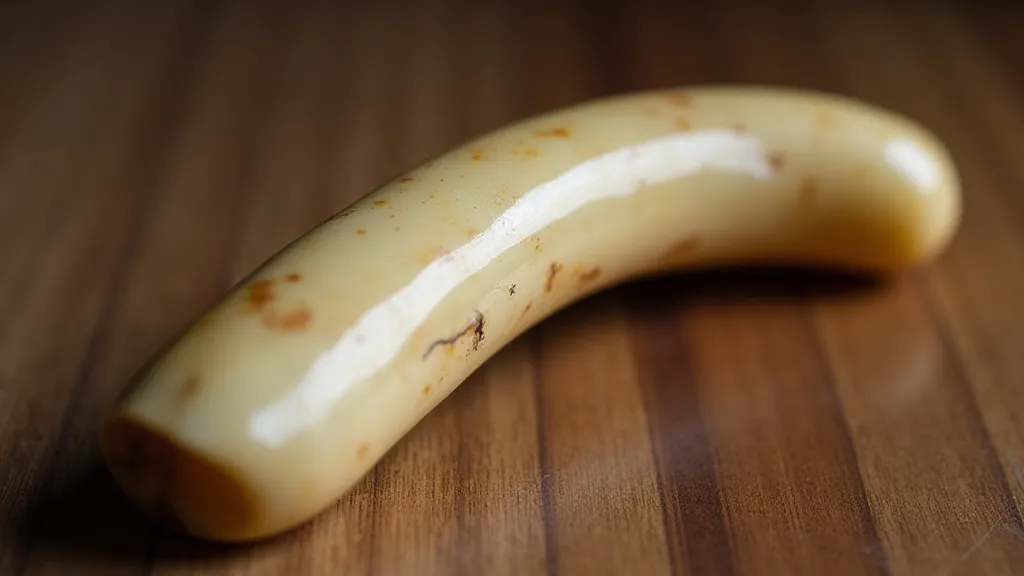
The Warmth of Wood
Wood shoehorns offer a distinct aesthetic appeal, often characterized by their warm tones and natural grain patterns. The type of wood used significantly impacts the shoehorn's appearance and value. While primarily designed for men’s footwear, it's fascinating to see how these objects have evolved, particularly regarding the changing styles observed in women's shoehorns throughout history.
These hardwoods are prized for their rich colors and beautiful grain. Walnut is particularly sought-after for its deep, chocolate-brown hue.
Less common, but highly desirable, exotic woods bring a touch of luxury and rarity. Rosewood’s reddish-brown color and ebony’s deep blackness add a distinctive flair.
A very fine-grained hardwood, often used for intricate carvings.
The color, grain, and density of the wood are key identifiers. Walnut is typically darker than cherry. Rosewood has a distinctive oily feel. Careful observation and comparison to wood identification guides can aid in accurate determination.
Metals: Sterling Silver, Brass & Beyond
Metal components, such as handles, ferrules (the ring at the end of the shoehorn), and decorative elements, were commonly incorporated into vintage shoehorn designs. Their design and function have extended beyond just assisting with footwear; people have found innovative other uses for vintage shoehorns throughout the years.
The hallmark of luxury, sterling silver shoehorns are often intricately decorated with hallmarks and embellishments. The presence of clear, legible hallmarks is a strong indicator of authenticity.
More affordable than sterling silver, brass was widely used for handles and decorative accents. It tarnishes readily and often has a warm, golden hue.
Similar to brass, bronze offers a reddish-brown color and is often used for decorative details.
A silvery-colored alloy that was often used as a less expensive alternative to sterling silver.
The purity of the metal directly influences its value. Sterling silver is significantly more valuable than brass or nickel silver. Hallmarks are crucial for confirming the metal content. Tarnish and wear are common on older metal components.

Other Materials & Combined Designs
Beyond the primary materials mentioned above, you might encounter other elements:
Often used for decorative inlays or handles, offering a lustrous, iridescent appearance.
(Now highly regulated and often a substitute material) Once used for handles and decorative accents.
Frequently used for shoehorn sheaths or coverings.
Many vintage shoehorns combine multiple materials, creating visually stunning and historically significant pieces. A shoehorn might have a wooden handle, a sterling silver ferrule, and mother-of-pearl inlays. Understanding the interplay of these materials is key to appreciating the artistry and craftsmanship of these collectible accessories. Tracking down these unique pieces can be a quest in itself; knowing where to find vintage shoehorns can make the hunt more efficient.
The Significance of Materials to Value
The materials used are *critical* factors influencing the value of a vintage shoehorn:
Shoehorns made from rare woods or metals (like rosewood or solid gold) command higher prices.
The condition of the materials impacts value. Untarnished silver, pristine wood, and crack-free ivory are highly desirable.
Intricate carvings, detailed engravings, and unique embellishments increase the shoehorn's worth.
A documented history, like ownership by a notable figure, can significantly elevate value.
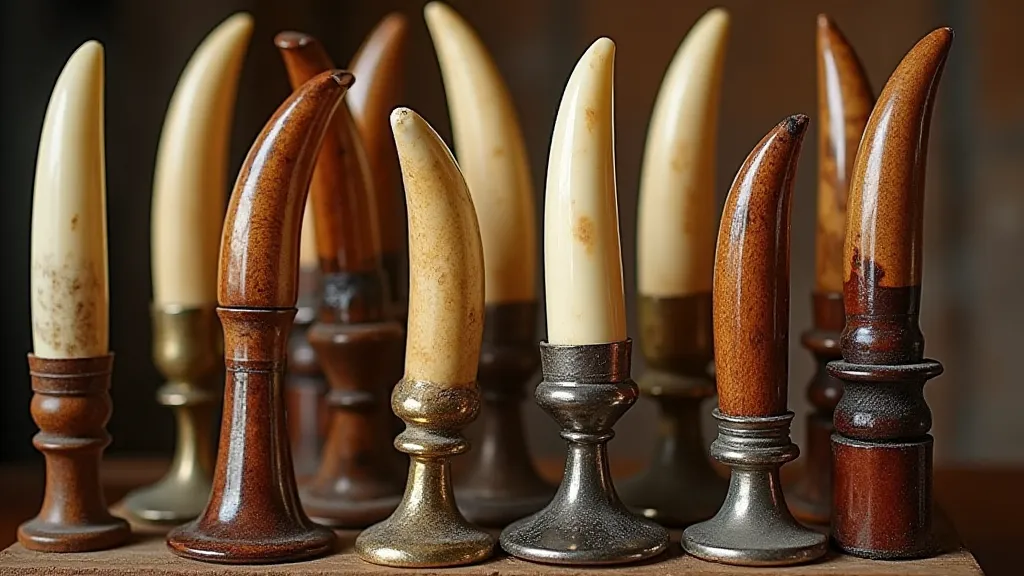
By carefully examining the materials used in vintage shoehorns and understanding their historical context, collectors can unlock a deeper appreciation for these charming and functional objects. Happy collecting!



